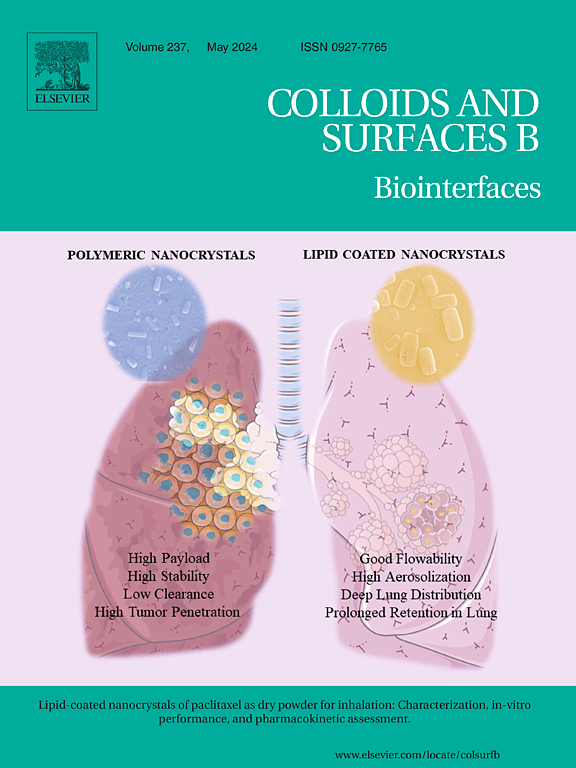Matrix matters: How extracellular substances shape biofilm structure and mechanical properties
IF 5.4
2区 医学
Q1 BIOPHYSICS
引用次数: 0
Abstract
Biofilms possess unique mechanical properties that are vital to their stability and function. Biofilms are made of extracellular polymeric substances (EPS) secreted by microorganisms and comprise polysaccharides, proteins, extracellular DNA (eDNA), and lipids. EPS is the primary contributor and driver of the biofilm structure and mechanical properties such as stiffness, cohesion, and adhesion. EPS enhances the elasticity and viscosity of biofilms, allowing them to withstand mechanical stresses, shear forces, and deformation. Therefore, biofilms are notoriously difficult to remove and can result in billions of dollars in losses for various industries due to their adverse effects, such as contamination, pressure loss, and corrosion. As a result, it is essential to comprehend the mechanical properties of biofilms to control or remove them in various scenarios. We undertook a fundamental study to determine the relationship between individual EPS components and biofilm mechanical properties. In this study, a CDC biofilm reactor was used to grow pure culture biofilms (Staphylococcus epidermidis) which were treated with six EPS modifier agents (Ca2+, Mg2+, periodic acid, protease K, lipase, and DNAase I) to modify or cleave specific EPS components. The mechanical properties (Young's Modulus) of treated biofilms were subsequently tested using atomic force microscopy (AFM), the biofilm EPS functional groups were measured via the Fourier transform infrared (FTIR) spectroscopy, and biofilm structural characteristics using confocal imaging. The FTIR results showed that EPS modifier agents successfully reduced their target EPS components. Similarly, the confocal microscopic analysis results showed that most of these modifier agents (except lipase) significantly reduced (P-value <0.05) the biovolume and thickness of treated biofilms. Conversely, most of these modifier agents (except protease K) significantly increased (P-value <0.05) the roughness coefficient of the biofilms. Finally, data from AFM showed that biofilm mechanical properties (Young’s modulus) significantly (P-value <0.05) changed with their EPS composition. These results have significant ramifications for biofilm management and control in myriad scenarios.
基质很重要:细胞外物质如何塑造生物膜的结构和机械特性。
生物膜具有独特的机械特性,这对其稳定性和功能至关重要。生物膜由微生物分泌的胞外高分子物质(EPS)构成,由多糖、蛋白质、胞外 DNA(eDNA)和脂质组成。EPS 是生物膜结构和机械特性(如硬度、内聚力和粘附力)的主要成分和驱动力。EPS 可增强生物膜的弹性和粘度,使其能够承受机械应力、剪切力和变形。因此,众所周知,生物膜很难清除,而且由于污染、压力损失和腐蚀等不利影响,会给各行各业造成数十亿美元的损失。因此,有必要了解生物膜的机械特性,以便在各种情况下控制或清除生物膜。我们开展了一项基础研究,以确定单个 EPS 成分与生物膜机械特性之间的关系。在这项研究中,我们使用 CDC 生物膜反应器培养纯培养生物膜(表皮葡萄球菌),并用六种 EPS 改性剂(Ca2+、Mg2+、定期酸、蛋白酶 K、脂肪酶和 DNA 酶 I)对其进行处理,以改变或裂解特定的 EPS 成分。随后使用原子力显微镜(AFM)测试了处理过的生物膜的机械性能(杨氏模量),通过傅立叶变换红外光谱(FTIR)测量了生物膜 EPS 的官能团,并使用共聚焦成像技术测量了生物膜的结构特征。傅立叶变换红外光谱结果表明,EPS 改性剂成功地减少了其目标 EPS 成分。同样,共聚焦显微镜分析结果表明,大多数改性剂(除脂肪酶外)都能显著减少(P-value
本文章由计算机程序翻译,如有差异,请以英文原文为准。
求助全文
约1分钟内获得全文
求助全文
来源期刊

Colloids and Surfaces B: Biointerfaces
生物-材料科学:生物材料
CiteScore
11.10
自引率
3.40%
发文量
730
审稿时长
42 days
期刊介绍:
Colloids and Surfaces B: Biointerfaces is an international journal devoted to fundamental and applied research on colloid and interfacial phenomena in relation to systems of biological origin, having particular relevance to the medical, pharmaceutical, biotechnological, food and cosmetic fields.
Submissions that: (1) deal solely with biological phenomena and do not describe the physico-chemical or colloid-chemical background and/or mechanism of the phenomena, and (2) deal solely with colloid/interfacial phenomena and do not have appropriate biological content or relevance, are outside the scope of the journal and will not be considered for publication.
The journal publishes regular research papers, reviews, short communications and invited perspective articles, called BioInterface Perspectives. The BioInterface Perspective provide researchers the opportunity to review their own work, as well as provide insight into the work of others that inspired and influenced the author. Regular articles should have a maximum total length of 6,000 words. In addition, a (combined) maximum of 8 normal-sized figures and/or tables is allowed (so for instance 3 tables and 5 figures). For multiple-panel figures each set of two panels equates to one figure. Short communications should not exceed half of the above. It is required to give on the article cover page a short statistical summary of the article listing the total number of words and tables/figures.
 求助内容:
求助内容: 应助结果提醒方式:
应助结果提醒方式:


